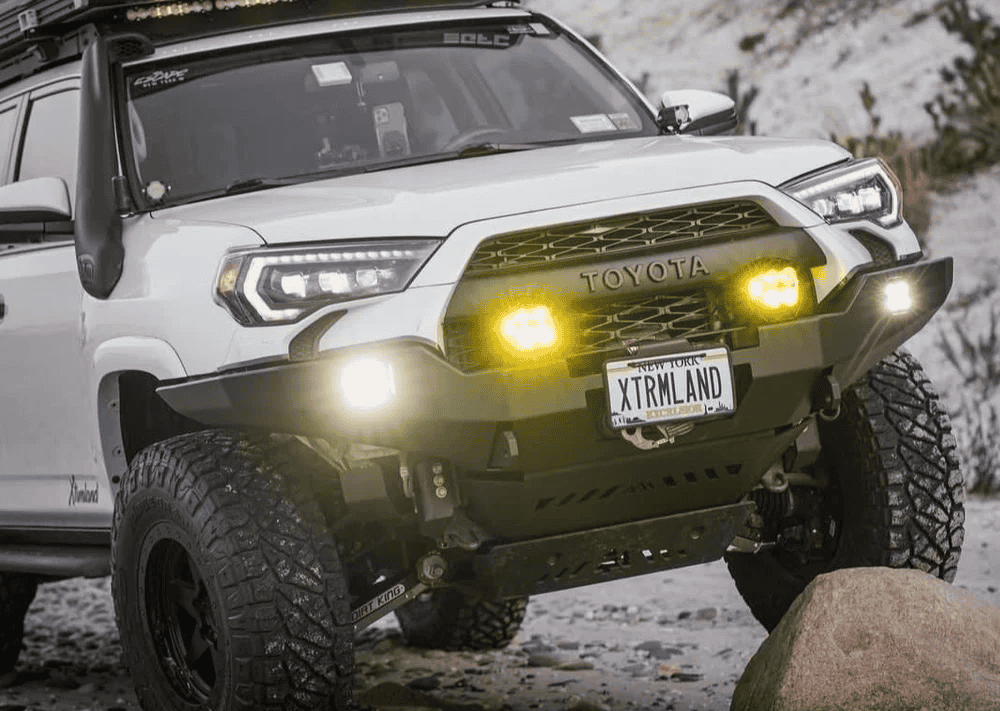Overland Vehicles

A flatbed conversion for overland camper use replaces the factory pickup box with a tray that maximizes usable space. The open deck accepts a canopy or service body, then integrates under tray boxes, rear drawers, and secure tie downs. You gain straight sided storage, fewer wasted corners, and easier access to bulky items like water tanks, fuel, spares, or recovery boards. Most trucks also see a better departure angle by eliminating the deep rear bumper pocket. The result is a rig that carries more efficiently and performs better off road.
Factory beds steal volume with wheel well intrusions and tapered walls. A tray creates full width storage, which means wider drawers, longer slide outs, and room for dual spares without awkward stacking. By trimming rear overhang, the departure angle improves, reducing bumper strikes on ledges. Keep payload in mind though. Choose lightweight aluminum or composite components where possible and balance mass so both axles stay within their ratings. Heavy items ride low and centered to protect handling and braking.
Aluminum trays resist corrosion and save weight, while steel offers durability in high impact environments. Many builds mix materials, using an aluminum deck with steel subframe or swing out carriers. The mount matters as much as the material. A ladder frame truck benefits from a flexible three point or bush mounted subframe that allows chassis twist without stressing the canopy. Solid mounting can lead to cracked panels when the frame articulates over uneven terrain.
Start with your must carry list. Water capacity, fuel range, fridge size, cooking method, sleeping height, and tools will drive dimensions and box placement. Decide on a canopy style early. Full height canopies maximize volume, low profile canopies cut frontal area and wind noise, and partial canopies leave deck space open for motos or bulky gear. Design drawers around camp flow so the kitchen, fridge, and utensils open on the same side for quick setups.
A clean electrical plan is the backbone of an overland camper. Many builders choose a sealed power hub with a DC to DC charger, solar controller, distribution fusing, and clearly labeled service points. Keep battery mass low and near the centerline for stability. Vent appliances and heaters per manufacturer specs and isolate exhaust from dust prone areas. Water tanks ride ahead of the rear axle when possible, plumbed to a sediment filter and pump with protected lines to avoid rock damage. Heat exchangers and hydronic systems should be mounted where service is straightforward.
A flatbed makes spare tire solutions simple. Under tray cradles work well if departure height remains safe. Rear swing outs keep weight aft, so design carriers that latch solidly and open far enough for drawer access. Integrate recovery points tied into the frame, not just the tray. Plan safe jack points, traction board mounts, and a shovel bracket that you can reach with a loaded rig. Access steps, grab handles, and a stable ladder improve safety at camp and on the trail.
Lighting and legal requirements change with a flatbed conversion for overland camper travel. You will relocate tail lights, reverse lights, and the license plate. Use approved marker lights, reflective tape where required, and shield wiring from abrasion. Relocate sensors and cameras so driver aids still function. Fuel filler necks need correct routing and venting to prevent slow fills and evaporative system faults.
Weigh the truck empty and loaded. Keep axle weights within the door sticker ratings and verify tongue weight if towing. Tire selection should match the new gross weight and intended terrain, with an honest look at braking distance and heat load. After any structural changes, document the work for insurance and state inspection. A tidy, traceable install file helps when crossing borders or selling the vehicle later.
Complex fabrication, subframe design, and integrated wiring benefit from experienced hands. A seasoned builder can package drawers, tanks, and electronics in a way that protects serviceability while keeping weight in check. They also understand chassis flex, isolation mounts, and dust sealing, which are easy to underestimate but critical for durability on washboard and rock.
OZK Customs designs and builds full trail ready systems that include trays, canopy layouts, electrical integration, and custom metal work. Explore our approach to purpose built trucks on the overland rigs page, see how a custom overland upfit comes together, and learn what sets our team apart at why choose OZK. If you are ready to move from sketch to miles, we will map your platform, weight targets, and camp routine into a flatbed conversion that feels seamless on highway and trail.
Ready to turn your truck into a purpose built overland camper with clean wiring, smart storage, and trail proven fabrication? Tell us about your platform and travel goals, and OZK Customs will map a flatbed conversion that fits your payload, power, and layout needs. Submit the form to get a tailored plan, timeline, and budget.
ADDRESS:
6159 E Huntsville Rd, Fayetteville, AR 72701
PHONE:
(479) 326-9200
EMAIL:
info@ozkvans.com